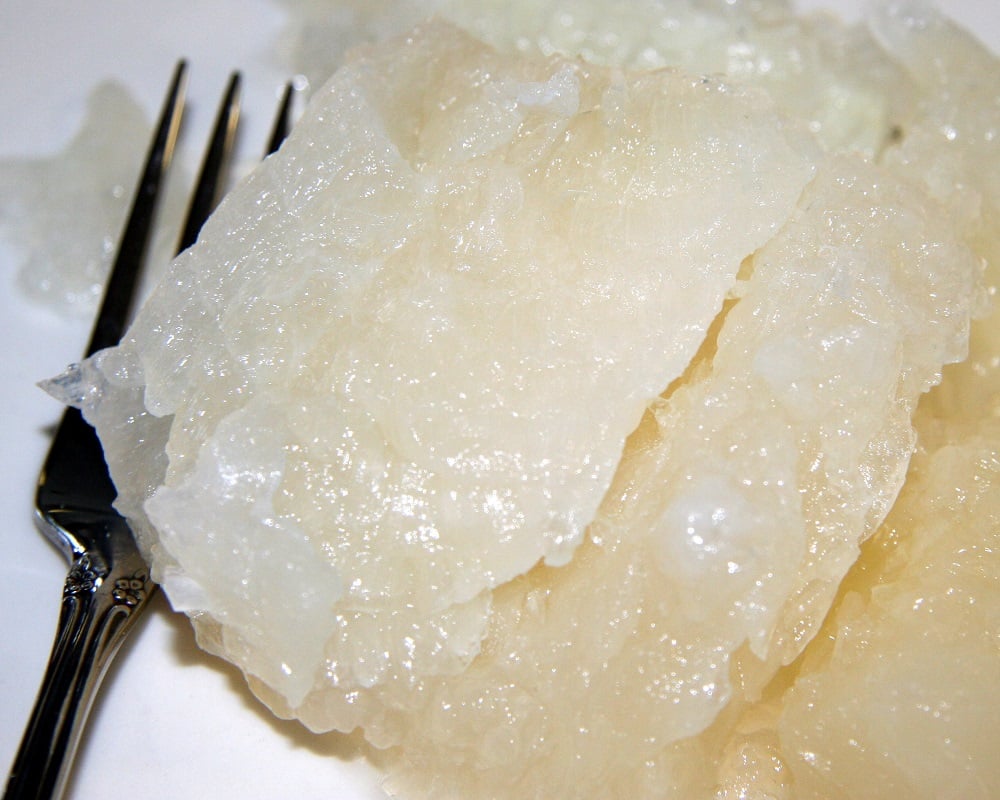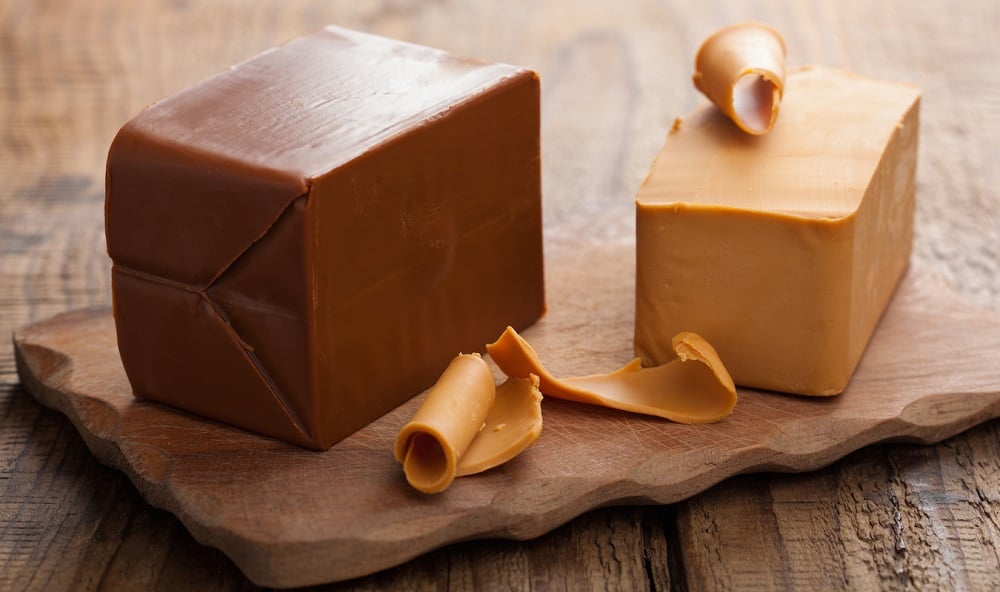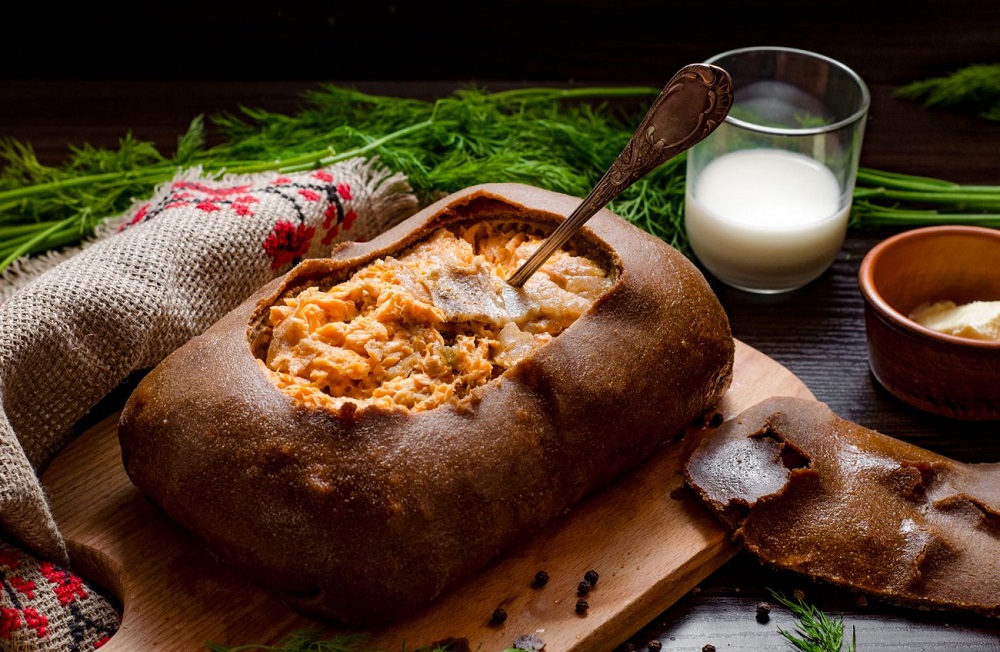The inhabitants of the Scandinavian Peninsula and their closest neighbors live up to their proud title of Viking descendants. They have learned to extract the maximum from the resources available to them — and they clearly have strong stomachs.
What do they eat? That’s what we’ll talk about today. Here’s a selection of the most exotic Scandinavian dishes. Spoiler: most are fish-based, since the sea is nearby after all.
You can bring your love for some northern land products home. For example, I fell in love with brunost cheese. Trying the rest is as extreme as skydiving. Some are indeed dangerous to health. So be prepared.
1. Surströmming
Starting with a trump card, the first place in our top goes to “rotten fish.” If you accidentally spill it on your clothes — throw them away.
Swedish stinky herring is a quest for the brave. There’s even talk of banning it in multi-story buildings. It’s no wonder, the smell is so pungent it will wake up all your neighbors.

How is surströmming made? The fish is soaked in a saline solution for several days, then sealed in barrels for fermentation. It is believed that the dish appeared during the war between the Swedes and the Prussian feudal lords. Apparently, salt supplies were running low, and there wasn’t enough for proper fish preservation. Naturally, the herring began to ferment. But the warring Swedes found it acceptable.
The fish smells because it releases acetic and propionic acids, giving it its distinctive odor. But for the locals, it’s a culinary landmark, their pride, and a delicacy. Surströmming is eaten with tomatoes, bread, and onions. It even has its own festivals.
2. Rakfisk
A bit reminiscent of the first item. A Norwegian delicacy. Also fish (usually trout, sometimes whitefish or char), also with a pungent smell. It’s also salted, sealed in barrels, and forgotten for a while, sometimes for a couple of months, sometimes for six months. People get used to anything! Despite the smell, Norwegians consume hundreds of tons of this pungent fish every year. Rakfisk is served with onions, black bread, and sour cream.
3. Lutefisk
Visually — a white stress-relief slug. The fish (usually cod) is first dried and then soaked in lye. A remarkable dish. And here’s why. On the one hand, it’s a classic Scandinavian Christmas dish. As familiar to them as Olivier salad is to us during the holidays. So what’s the catch?
The catch is that if you look at the product from another angle, it’s extremely dangerous to health. Lutefisk can only be eaten after the most thorough thermal processing. The product contains a toxic substance — the amino acid lysinoalanine. It causes acute kidney failure.
People with unprepared stomachs should not try it, even locals don’t eat lutefisk more than once a month.

By the way, there’s a 16th-century legend about how the dish appeared. Centuries ago, a lightning strike burned down a fish warehouse, and all its contents mixed with ash. The inventive Vikings decided to eat at least what was left, soaking the fish in water beforehand. Due to the chemical reaction with the lye, the fish became gelatinous and people liked it.
Nowadays, lutefisk is often eaten with bacon, onions, mashed potatoes, and sometimes even with sweet cheese — which we’ll talk about next.
4. Brunost
Let’s break up our fish series with some dairy products. Brunost cheese is one of the rarest and youngest types of cheese. It was invented by Norwegian farmer Anne Hov in the late 19th century. She saved her Gudbrandsdalen valley from poverty in the 1880s thanks to her discovery. Previously, Norwegians boiled whey to produce a soft, sweet brown cheese. Anne decided to add sour cream to it — and her invention took off and is still in demand.
Brunost tastes like boiled condensed milk or salted caramel. There are different variations, but it’s a sweet cheese, although it may contain no sugar at all. Usually, brunost is made from a mixture of cow and goat milk in different proportions, sometimes with the addition of sheep’s milk. This product can at least be recommended to try!

5. Hákarl
How about some shark meat? Unfortunately, it’s also rotten. The meat of the Greenland shark is soaked in ammonia and urea because the fish have no kidneys. So fresh shark meat can’t be eaten. But the Scandinavians — experienced people — let it ferment in a barrel, and it’s good to eat. In Icelandic supermarkets, hákarl is sold packaged and used as a snack with beer.
6. Øllebrød
Speaking of beer. Øllebrød is a beer soup. Popular and much-loved in Norway. But after cooking, only the name and a light beer aroma remain. The soup is made from beer and milk, with a bit of flour, honey, sometimes eggs, various spices, and croutons. There are different variations. It is considered an immune-boosting dish. It doesn’t cause kidney failure — and that’s already good!
7. Kalakukko
Here’s some bread to go with the soup. Traditional Finnish bread: rye dough on the outside, pork fat, and chopped salmon inside. Interestingly, the bones are not removed from the fillet. The bread is baked for up to six hours. During this time, the bones soften themselves.

8. Muktuk
How about some skin? Not just any skin, but whale skin! Yes, muktuk is frozen whale skin with blubber. Whales are as common in the Scandinavian diet as sharks. Muktuk is eaten in small cubes with onions, garlic, and bread. Although thawed whale skin is also edible, it can sometimes be dried.
In Greenland, muktuk is always present on the Christmas table, another unusual analogue to our Olivier salad. But again, it’s a safe-for-health analogue.
Overall, Scandinavian cuisine has much to offer: sour cream porridges, moss dishes, caviar sold in tubes, reindeer snacks, bone marrow tartare, and much more.
Try, experiment, and adopt experiences, like various cranberry additives that go well even with potato pancakes — a Norwegian once taught me.
PS: Which item from the list would you like to try, or on the contrary, which would you never agree to taste?

